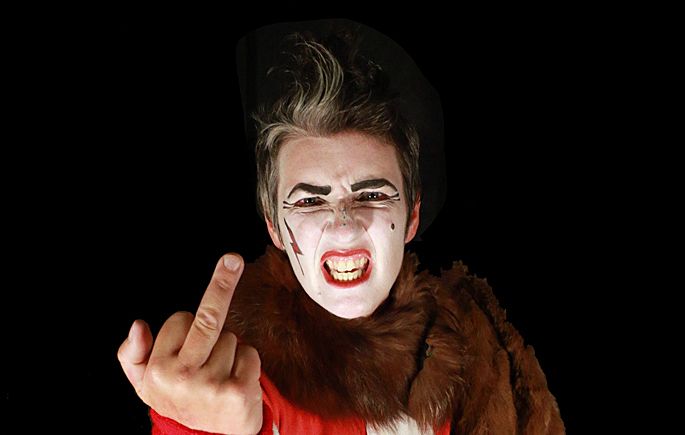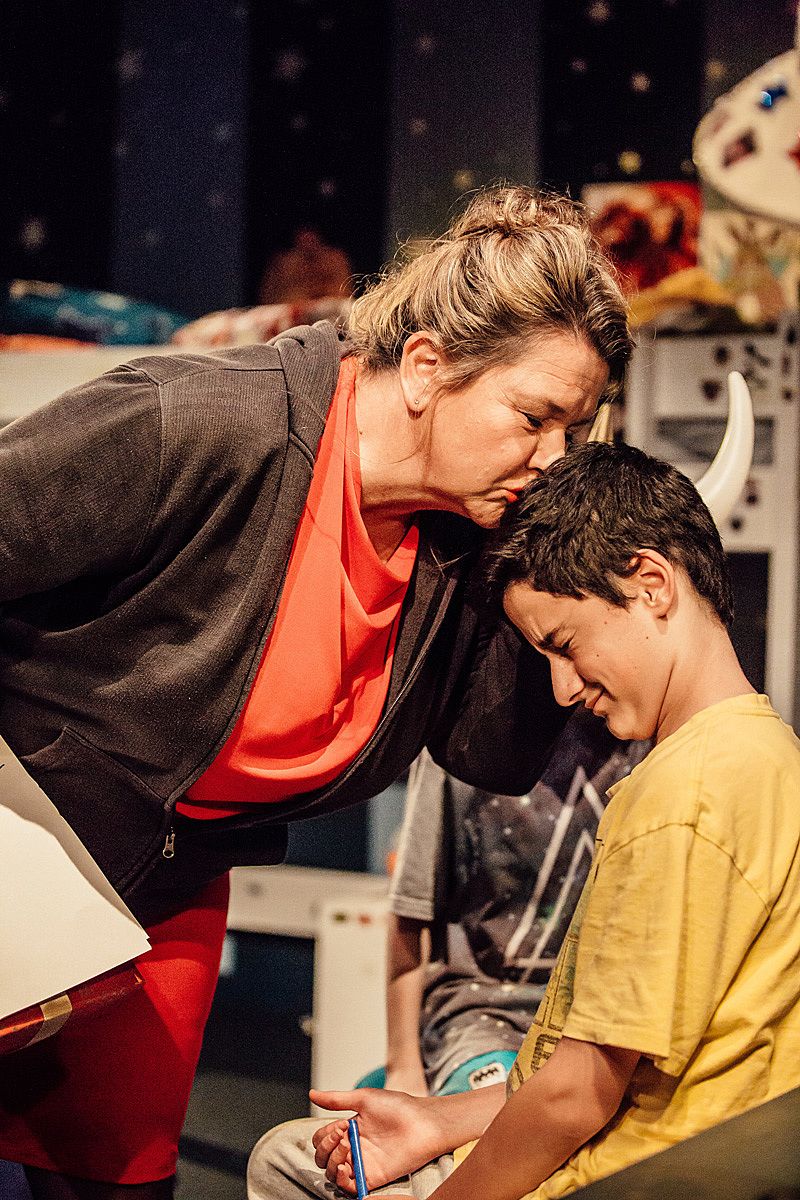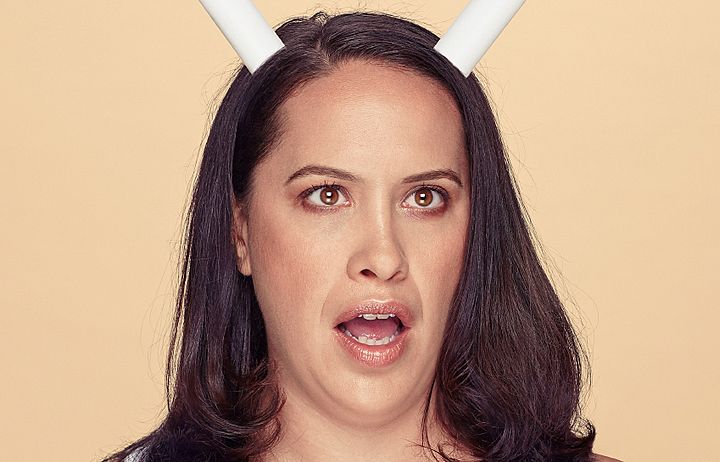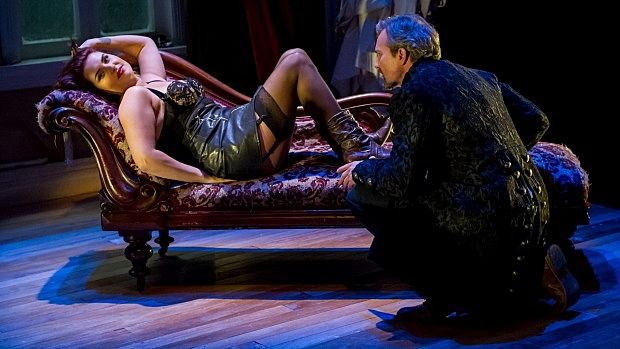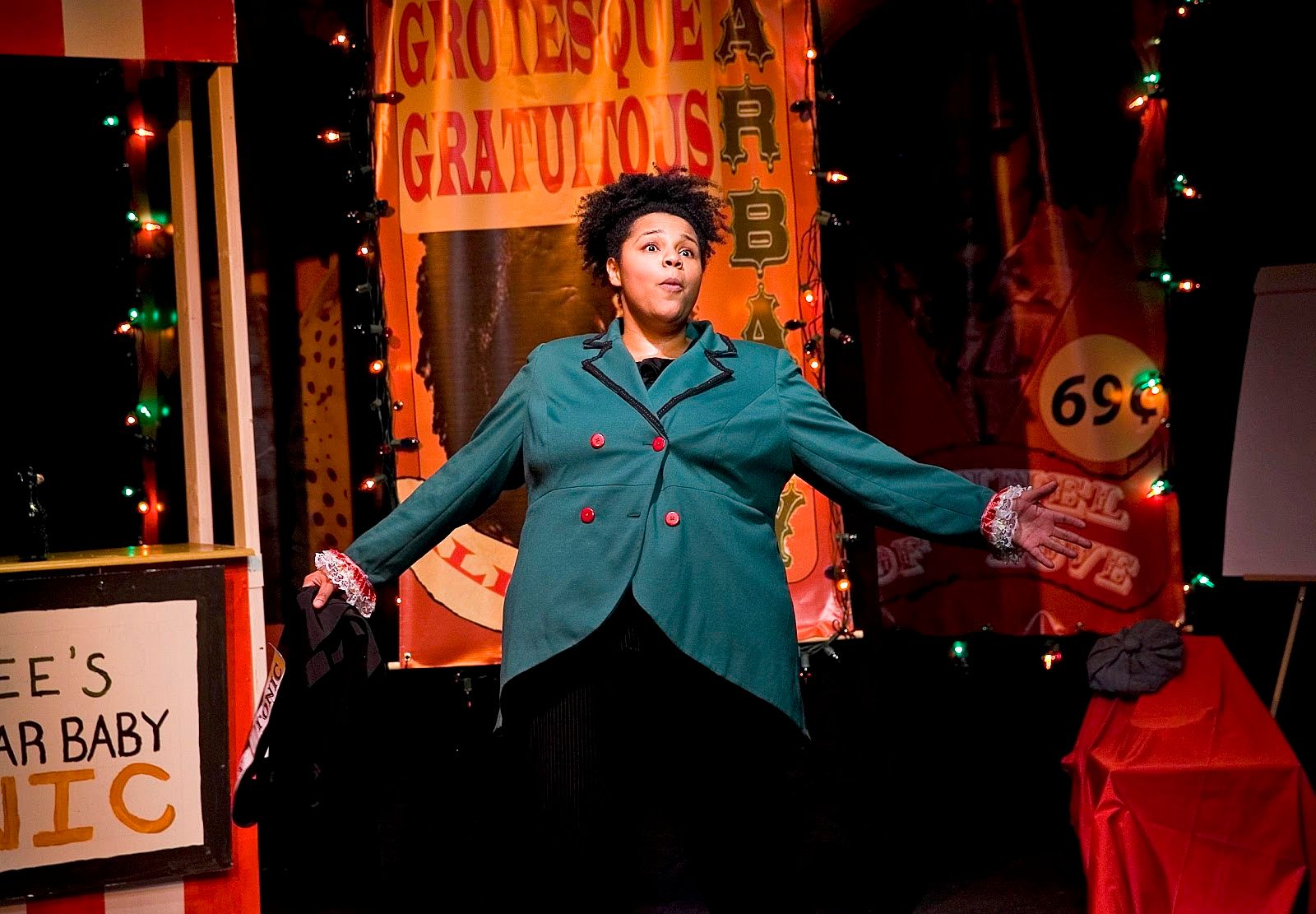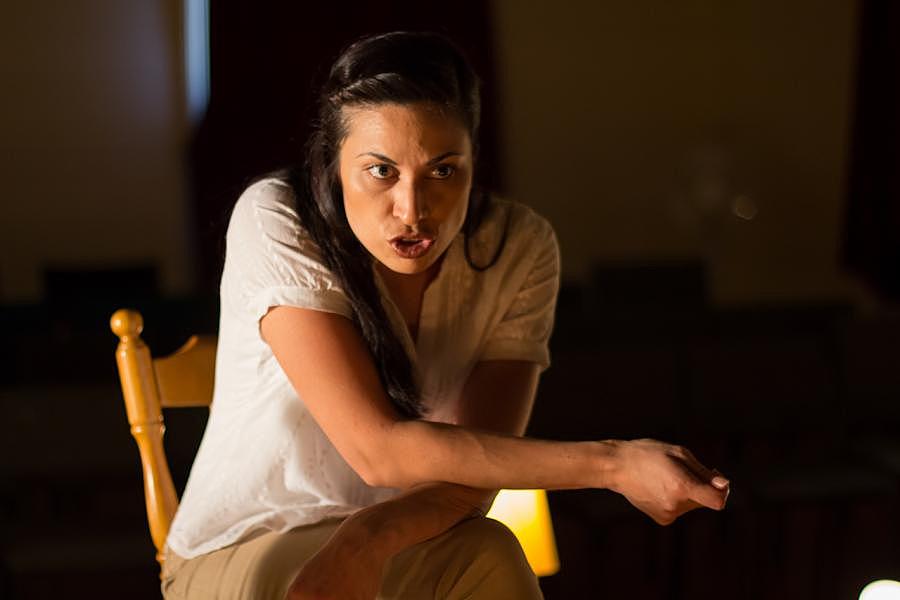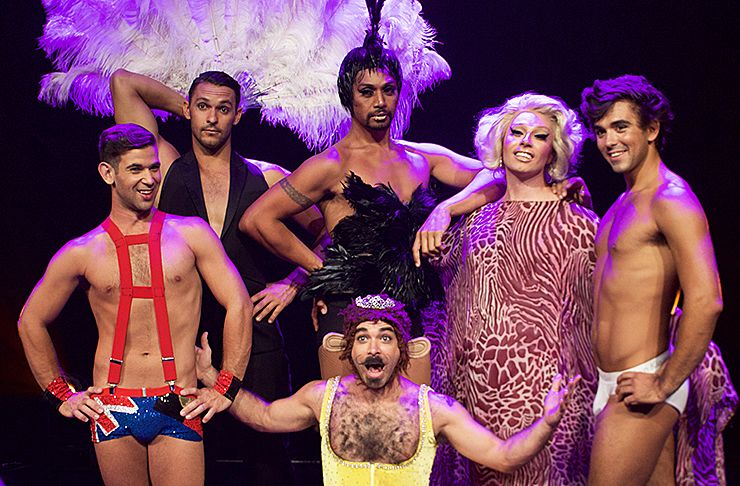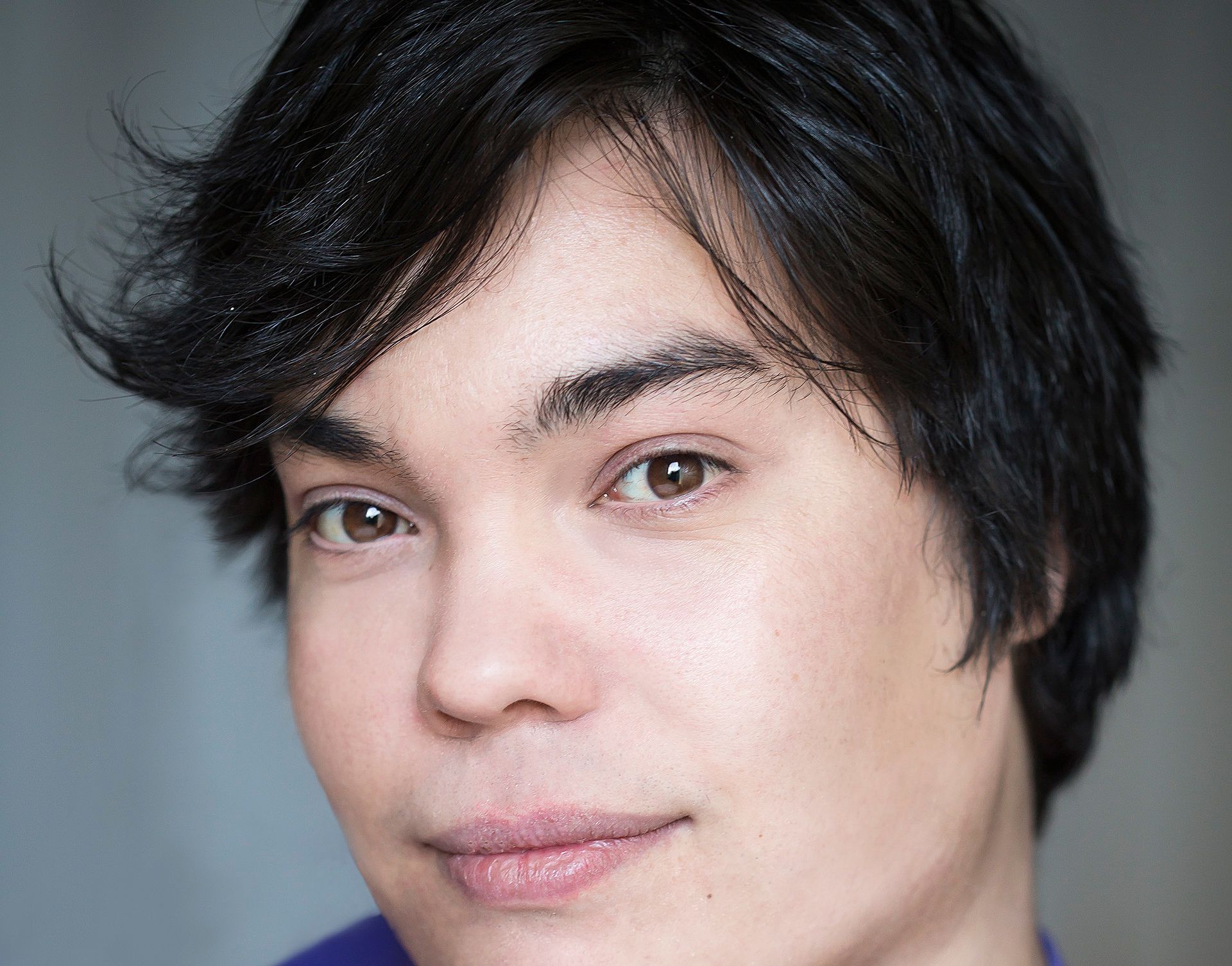Violently to My Taste: Ten Moments in Auckland Theatre 2016
Apart from that unfortunate Pop-Up Globe.
Sam Brooks liked many things in 2016 Auckland theatre; Shakespeare on scaffolding was not one of them.
It's hard to start a discussion of Auckland theatre in 2016 without talking about the Pop-Up Globe. The enterprise was a distracting and unfortunately literal symbol of colonial nostalgia, a building dedicated to a centuries-old British world stuck right in the middle of a theatre hub actively working towards diversity of voices and the development of new talent. No single issue galvanised and divided the theatrical community as starkly as this one, and the lines were usually (and unhelpfully) drawn between those who were involved with the Pop-Up Globe in some capacity and those who weren’t.
Beyond the discussions - and these are important discussions to have - about how few women there were in the official casts and the dubious ethics of bringing overseas actors in for local productions, the biggest question that remains is what roused tens of thousands of people to flock to Shakespeare performed on some scaffolding? Was it the novelty factor or are audiences clamouring for Shakespeare that much? Are they going to other theatre, and if not, why not?
As the Pop-Up Globe is settling in a new location in the suburbs for its second year, it’ll be interesting to see where the conversation goes, and if real dialogue begins between the two sides of argument.
Turning to mainstages, Auckland Theatre Company had a weak start with the dated-on-arrival Polobut a surprisingly strong year, with four critically acclaimed productions in a row (To Kill a Mockingbird, That Bloody Woman, The Curious Incident of the Dog in the Night-Time and Venus in Fur). 2017 is the real test for ATC – what does the new theatre mean not only for the company, but for the theatre landscape as a whole?
On the other end of the mainstage spectrum, Silo Theatre made a mark with its most provoking and eclectic programme to date, starting with return seasons for two beloved productions and continuing with three shows that couldn’t be more different: a child-focussed adaptation of the Greek tragedy Medea, the feminist scream Boys Will Be Boys and the strangely crowdpleasing German absurdist Perplex.
The CBD theatre hub remains strong, with The Basement and Q continuing to deliver eclectic and diverse programmes from artists both emerging and established, local and international, but a thorn in the side of Auckland theatre continues to be the community’s central focus. Theatre can, and should exist outside of the CBD venues. As Te Pou, TAPAC and Mangere Arts Centre start to programme more consistently, it would be great to see the community as a whole start to travel beyond the CBD, and talk about shows beyond the CBD. A show like Tusiata Avia's Wild Dogs Under My Skirt comes along once in a generation, and it’s a show that not only deserves to be seen by the wider community, but needs to be seen.
The things I loved about theatre this year differs from a lot of other people. I can already tell by looking at the Auckland Theatre Awards that my opinion differs, almost violently so, from their consensus, and that difference excites me. It excites me that Auckland is turning into a place where these kinds of differences can exist, where debate and conversation can exist and flourish, and I hope that 2017 continues this dialogue.
Without further ado, these are the ten things that made me angry, made me sad, made me stand up and clap like a maniac, and mostly just made excited about Auckland theatre this year:
Bronwyn Bradley in Medea
Medea is a monster. Medea is a human. Medea is a woman who does a monstrous thing. In this version of Medea, Bronwyn Bradley served as the perfect conduit between the audience and the cast. We needed to see her as her children see her, even as we know what’s going to happen. I saw Medea twice, and both times, Bradley dug so deep into her character’s choice and played Medea’s fatal action with such clarity and purpose that I didn’t need to know the backstory or the details. She dug into the truth of someone who does a horrible thing not because she wants to, but because she feels she has no other option.
Kura Forrester in Perplex
Kura Forrester has been taking Auckland theatre by the throat for the past two years. From her terrifyingly raw turn in last year’s Nga Pou Wahine to her comic tour-de-fource Tiki Tour and even in her stints as host for the Auckland Theatre Awards, she not only appears to be everywhere, but appears to be the best thing about wherever she is. However, it was in Silo’s production of this absurdist German play where Forrester hit somewhere entirely new. She pushed every joke, every reaction, got laughs where nobody else would find laughs, and cut to the core of what Perplex is; you just keep going even when your world is falling around you, and you cling to whatever it is you have. Nobody clung more to the truth, or to a laugh, more than Forrester did.
Morgana O’Reilly in Venus in Fur
There are tiny roles that great actors can make something of, and there are good roles that great actors can turn into the lynchpin of an entire production. Both are pleasures to watch. But when you get a role that a production lays at a performer’s feet and tells them to run riot with, and you get a performer who is bursting with talent and charisma, you get magic.
David Ives’s Venus in Fur lays itself prostrate for Vanda, and Morgana O’Reilly took the role and ran with it. It was a full-on star performance, where every performance detail was like a morsel ready to be gobbled up. O’Reilly knew she had the audience in the palm of her hand, much like Vanda had Thomas in her hand, and seeing an actress take command over script, part and audience like that is a rare treat.
Vanilla Mirakaand Banging Cymbal, Clanging Gong
Straight up: The most poignant and devastating line written in New Zealand theatre in the past twenty years, and maybe ever, is a line that comes towards the end of Banging Cymbal, Clanging Gong. Our barbarian protagonist sees the love of her life being carted off, and asks, in the most pleading and tired voice: “My friend, why have you stopped fighting?”
These two shows, presented as a double bill at The Basement, represent a stubborn stab into the ground – a rejection of traditional forms and expressions, and a jump into difficult realms and emotions. Why should expressing something thorny and difficult like being uncomfortable with your cultural identity, or your rage at the artistic community around you be something easily contained and digested? Both these shows are messy and shift constantly to express what needs expressing at that moment, whether it’s through music, stand-up or stuffing being pulled out of a teddybear.
Vanilla Miraka sparked discussions in the community about race, ownership and depiction of one’s cultural identity; important discussions that need to be had and need to be continued. It was a powerful depiction of one woman’s struggle with her own cultural identity and how to appropriately express that both offstage and onstage.
On the other hand, Banging Cymbal Clanging Gong remains as poignant a call to arms as it must have been fifteen years ago. Randerson’s canonical work lures you into her ridiculous barbarian character, but when that gut-punch comes you realize that she’s playing every artist who has wanted to be different, and wanted to say something with that difference.
Randerson’s Banging Cymbal Clanging Gong asks why artists stop fighting. Sproull’s Vanilla Miraka answers by saying she doesn’t need to keep proving herself to still be in the fight; in the final moments she discards a symbol of her cultural identity, her korowai, because it’s too heavy. She doesn’t need to keep proving herself because she simply is.
Tar Baby
I don’t know what I was expecting walking into Tar Baby. I’d been asked to review it as part of the Auckland Arts Festival, and I walked out feeling like my perspective of what theatre should be had been violently shaken up.
Desiree Burch’s ninety-minute mixture of stand-up, storytelling and clown has stuck with me more than any show I’ve seen this year – it was an invective against racism and a scream against being thrown into a system designed to break down people who are othered in any way. But the genius of this show was how Burch implicated the audience in both sides of this fight – she made us confront the racist thoughts we didn’t know we had, then she threw us out into the real world to do something about it.
This was political, personal theatre at its finest, and we were blessed to have it on our shores.
Not in our Neighbourhood
As with Tar Baby, Not in Our Neighbourhood felt like a targeted bit of festival programming in the best way. Not only was it an exemplary work of theatre, Jamie McCaskill’s script and Kali Kopae’s performance were so delicately calibrated and observed it felt like you were watching a documentary. It felt, and still feels, like something that everybody in Auckland, that everybody in this country should see.
We see violence used onstage for drama so much - it’s an easy tool for playwrights to inject some stakes into a flagging script - but we very rarely see violence portrayed onstage as something that has long-standing consequences. The beauty and the necessity of what McCaskill and Kopae did in Not in Our Neighbourhood was to make the intangible real; they turned the ‘it’s not okay’ advertisements into something that we can hold onto. It’s one of the best plays to come out of this country in years, even more so because of its immediacy and timelessness.
Briefs
Circus can be dull, despite how much skill and open defiance of physics it requires. There’s only so many times you can see Cirque de Soleil before the death-defying feats become rote and boring.
Briefsblew circus apart by injecting it with charisma, uniqueness, nerve and talent. When I saw it in the ASB Theatre, it was one of the tightest circus and burlesque shows I’ve been to. Every act built to a climax, and the shifts between burlesque, circus and drag kept both show and audience alive. Most importantly, Briefs was aware that circus is not just about the audience watching people perform, it’s about making sure the audience is having a good time.
And while they’re having that good time, Briefs managed to sneak in politics and subversion. This is an unashamedly gay show. It’s a show that welcomes gay men, of all shapes and sizes, as figures to be desired, just as much as its inviting the audience to laugh with them.
Valerie
When I saw Valerie I said it was as close to a perfect piece of theatre as I could think of, when obviously no such thing could exist. While some plays this year were violently not to my taste, Valerie was so violently to my taste that I wanted to keep it close to me forever.
A gloriously messy mixture of cabaret, science lecture and personal storytelling, Valerie felt like a show that Last Tapes needed to put on, a show that invited and demanded discussion of mental illness.
Valeriewas the perfect clash between Cherie Moore’s command of her craft as an actress and singer, and Robin Kelly and Tom Broome, who were stepping onstage for the first time as performers, and were simply getting through the story as honestly as they could. All three, and Valerie as a whole, presented in a painfully honest and idiosyncratic way how the ripples of mental illness carry through generations, the damage that those ripples leave, and how we have to live through them.
The design of White/Other
There’s been a plethora of riches for theatre design nerds in Auckland this year, from Christine Urquhart’s set for Potato Stamp Megalomaniac, to Rachael Walker’s set for Boys Will Be Boys, to Rachel Marlow’s lighting for the same right through to basically anything that Jane Hakaraia has done this year. However, when I think of exemplary, truly inventive design, I settle on White/Other.
White/Otherwas a beautifully difficult show, resisting traditional forms and modes of expression to try communicate the inherent feeling of being othered. Te Aihe Butler’s sound design, which used looping and live feeds ingeniously, oppressed Alice Canton’s protagonist just as much as Christine Urquhart’s white-washed playground of a set. The design was something that needed to be worked against as much as the content of the work, for both Canton and the audience. White/Other was a reminder that design can be more than just beautiful or functional, it can be the gut punch that carries a show all the way to its destination.
Somewhere Series
While shows went up in our central theatre hub, on Cross Street some of the most vital work in the city was being developed and being put up, some for only a night, some as a preview for work to come later. Curated by The Town Centre’s Nisha Madhan, the monthly Somewhere Series pushed creators from all disciplines into the same room and gave us beautiful one-off works and discussions. It was the only place in town you could see Jo Randerson and Hayley Sproull play a game of Jenga while answering questions about what it meant to them to make work, what scared them about their work and what made them angry about the industry.
Beyond anything, Somewhere Series was a reminder that sometimes the most important and vital theatre happens outside the theatre, between people actually talking about and engaging with theatre after the lights come up. The theatre experience doesn’t just happen inside the black box, it happens when you’re taking your wine glass back to the bar, paying for parking and driving home through traffic. Somewhere Series captured those conversations, and in doing so, did some of the most vital work in the community this year.
For further reading, see Adam Goodall's ten moments in Wellington theatre.
